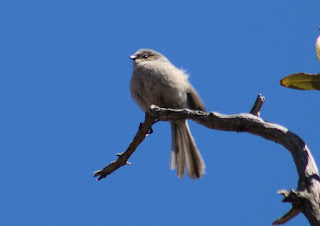Glendale Recharge Ponds 5.15.20
These ponds are actually surprisingly diverse in waterfowl and birds. And I said surprisingly because they're actually SRP water treatment plants. With a species list of over 279 species, this makes it one of the prime birding spots in Maricopa County. In fact, other than Wilcox, it's one of the best places to view waterfowl and shorebirds... and it's right in the heart of Arizona! They may look bland and dull at first but once you see terns, gulls, heron, ibises, and plovers, your mind changes instantly. Before coming here, you need to be prepared with water and head covering (especially when your in the middle of the az heat.) Revise a map (i have one posted below with the photos) and check out every nook and cranny of this place (even though it's so extensive) because a lifer could be awaiting you at any part or any pond. In total there are 6 basins that vary in water level. Some may be completely filled at the time while some may be completely empty. For the two times I've been, there was usually like 4 or 5 basins filled and 1 or 2 empty. It depends on what SRP decides to do. My first time there, resulted in many wintering waterfowl species (because I went in February) so if you want to check that out head over to the last part, but if you're wondering what migration looks like be sure to read this. Anyways this is how it went my most recent trip on the 15th.
I parked near the far right entrance and I got out of the car. I saw the usual desert wildlife... VERDIN, GREAT-TAILED GRACKLES, KILLDEER (a bunch lol,) and I actually saw some swallows as well. Once I got a closer look it turned to be a swarm of about 30-40 CLIFF SWALLOW, I was glad I finally got a better picture as my others were horrible. My goal was to start around Basin 6 and then 1 and 2 and finish off with 3 and 4. Basin 5 wasn't filled so I didn't even bother birding as much there. Basin 1 was filled with muck so there were several GREAT EGRETS and GREAT BLUE HERONS checking it out. The same was with Basin 1 and 2, just egrets and herons. But the diversity increased as I headed towards Basin 3.
The water was filled but there were little rows of marsh habitat and dirt lining the shallow water, so I'm guessing that's why there were more birds there than in the others. The first thing I saw was an adorable family of CANADA GEESE. There were 6 babies which were just.... well adorable. I pushed the cuteness away (even though it was hard too) and headed around the basin. To my surprise I didn't see any Western Sandpipers or Spotted Sandpipers.. I think they were replaced with dozens of killdeer. Dozens of BLACK-NECKED STILTS were guarding their nests and were calling out alarms as I waked around. In the grasses I could see flocks of RED-WINGED BLACKBIRDS, as well as a few YELLOW-HEADED BLACKBIRDS and a lone BROWN-HEADED COWBIRD. More birds included a few WHITE-FACED IBISES, BLACK PHOEBES, a SAY'S PHOEBE, and a pair of SNOWY EGRETS.
As I got towards ending around Basin 4 I saw a pair of CASPIAN TERNS! I was soooo happy I finally got to take some shots of them with my camera. The last time I saw them was at Ashurst Lake and I didn't have my camera so I didn't get any photos.... this bird was the highlight of my day there at the ponds. I snapped some shots (as they were more cooperative than I thought,) and I decided to take another round around the same basin. That's because it was filled with diversity and it had the most birds than all the others. So I started again and luckily I did because I missed a few HORNED LARKS. Other than that I saw the same birds as the first round. As I got near Basin 5 I saw at least 50 MALLARDS. Most of them were still with their juvenile ducklings following behind. I also saw a bunch of AMERICAN COOTS, but no Red-Necked Phalaropes as I was hoping for.
After ending it over at Basin 5 I added some HOUSE SPARROWS and HOUSE FINCHES to my checklist and prepared to get back in the car. But that stopped short as I saw a dark figure on an electricity pole in front of me. It was an OSPREY scanning the water for a fish dinner (more like fish lunch.) With that raptor I saw some more swallows, this time a couple of NORTHERN ROUGH-WINGED SWALLOWS, and a few GREAT-TAILED GRACKLES. That ended the day for me at the ponds but I got to say... even though there were no lifers... I'm so so so happy I got to redeem myself with photos of the Caspian Tern. If you want to check out some photos and a map be sure to check out the following. And if you'd like to see the checklist for 5.15 here it is: eBird Checklist 5.15.20 and the checklist for February's trip is after the map, and so are that day's photos.
Canada Geese
Yellow-Headed Blackbird
Horned Lark
White-Faced Ibis
Cliff Swallow
Map
Red is Parking
Blue is where you can bird in a riparian area.
Labeled in Black numbers are the basins.
2.7.20
Northern Pintail
American Kestrel
Northern Shovelers
Gadwall
Least Sandpiper
Savannah Sparrow
Killdeer
Black-Necked Stilt
Belted Kingfisher
well this concludes my past two trips at the Glendale Recharge ponds. I can't wait to head there again and if you have any questions don't hesitate to direct message me on instagram @mstremciuc.photo.






























Comments
Post a Comment